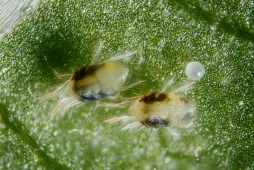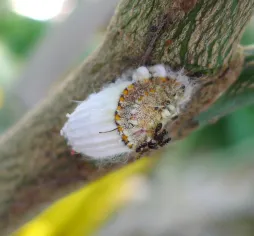Alocasia reversa, a foliage unlike any other
Do you dream of growing an elephant ear plant, but don't have room for an Alocasia macrorrhizos? Adopt an Alocasia reversa! Despite its small size, this Bornean plant boasts spectacular foliage.
How to recognize Alocasia reversa?
Alocasia reversa grows to no more than 40 centimetres in all directions. It is a tuberous perennial with a bushy habit.
Its short, green stem supports several light-green petioles and brown cataphylls.
The thick, sagittate leaves display several shades of green. But while alocasia Frydek has a dark leaf blade with white veins, the opposite is true of Alocasia reversa. The veins and center of the leaf are dark green, while the rest of the blade is a lighter, almost silvery green.
Flowering also holds a few surprises. A first, light-green, ovoid spathe is topped by a second, oval spathe. The latter contains a white spadix.
When fertilized, the flower gives rise to orange berries.
All parts of the plant are toxic if ingested. Alocasia reversa contains calcium oxalate crystals. These are particularly dangerous for small pets such as cats and dogs. Keep your Alocasia out of their reach.
Our maintenance tips
Alocasia reversa are not plants to be placed in everyone's hands. They need light, rich soil, a little knowledge and a lot of attention.
Watering
Water only when the substrate has dried on the surface (one or two centimeters).
Use non-calcareous water, such as rainwater or mineral water, at room temperature. Pour it over the soil, avoiding the foliage.
To prevent root rot, remove any water that collects in the dish or planter.
Spray
Mist the foliage with non-calcareous water at room temperature. This will temporarily increase humidity and prevent pest attacks.
Repotting
Every spring, repot your Alocasia reversa to give it more space.
Choose a pierced pot slightly larger than the previous one. It's best to opt for a clay model: this material promotes even drying of the soil.
Line the bottom with a bed of gravel or clay balls. Add a layer of potting soil with perlite or sand. For example, you can mix potting soil for green plants with sand. Place your subject in the center and fill in with substrate to within a couple of centimeters of the edge. Tamp down and water for the first time to encourage rooting.
Fertilization
To promote the growth of your Alocasia reversa, apply fertilizer in spring and summer.
Feed your Alocasia reversa with green plant fertilizer.
Cleaning
Dust on leaves interferes with photosynthesis. To make sure your Alocasia reversa gets all the available light, clean its foliage with a clean, damp cloth.
Caution! All parts of the plant are toxic. Wear gloves and wash your hands after touching the foliage.
Caution! All parts of the plant are toxic. Wear gloves and wash your hands after touching the foliage.
Cutting
Cutting is carried out during the strong growth phase, generally in spring and early summer.
Locate one of the young shoots that has formed at the foot of the main plant. Take care to remove it with its roots.
Prepare buckets with potting soil similar to that used for adult plants. Translucent pots are best. You'll be able to monitor root growth.
Place the bulbils on the surface, flat side down and pointed side up. Water and then place your bulbils in a greenhouse or transparent crate.
Diseases / Threats
Information
| Family | Araceae - Araceae |
| Type | Alocasia - Alocasia |
| Species | Alocasia reversa - Alocasia reversa |
| Lifecycle | Perennial |
| Foliage | Evergreen |
| Exposure | |
| Substrat | |
| Planting methods |
In pots In tubs |
| Categories | |
| Tags |
Soiffarde Toxic |
| Origin |
Southeast Asia |
| Hardiness (USDA) | 12a |
| Leaf color |
|
| Flower colors |
|
Discover plants from the same family
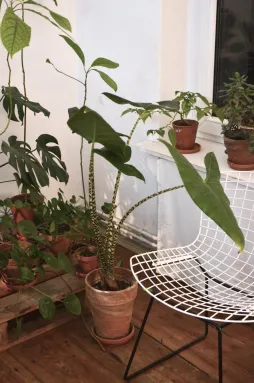
Alocasia zebrina
Discover
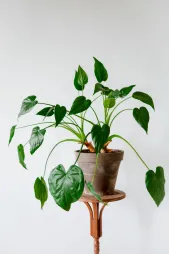
Alocasia cucullata
Discover
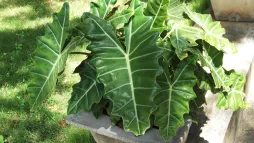
Alocasia sanderiana
Discover
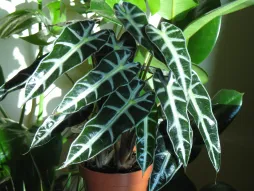
Alocasia 'Polly
Discover









